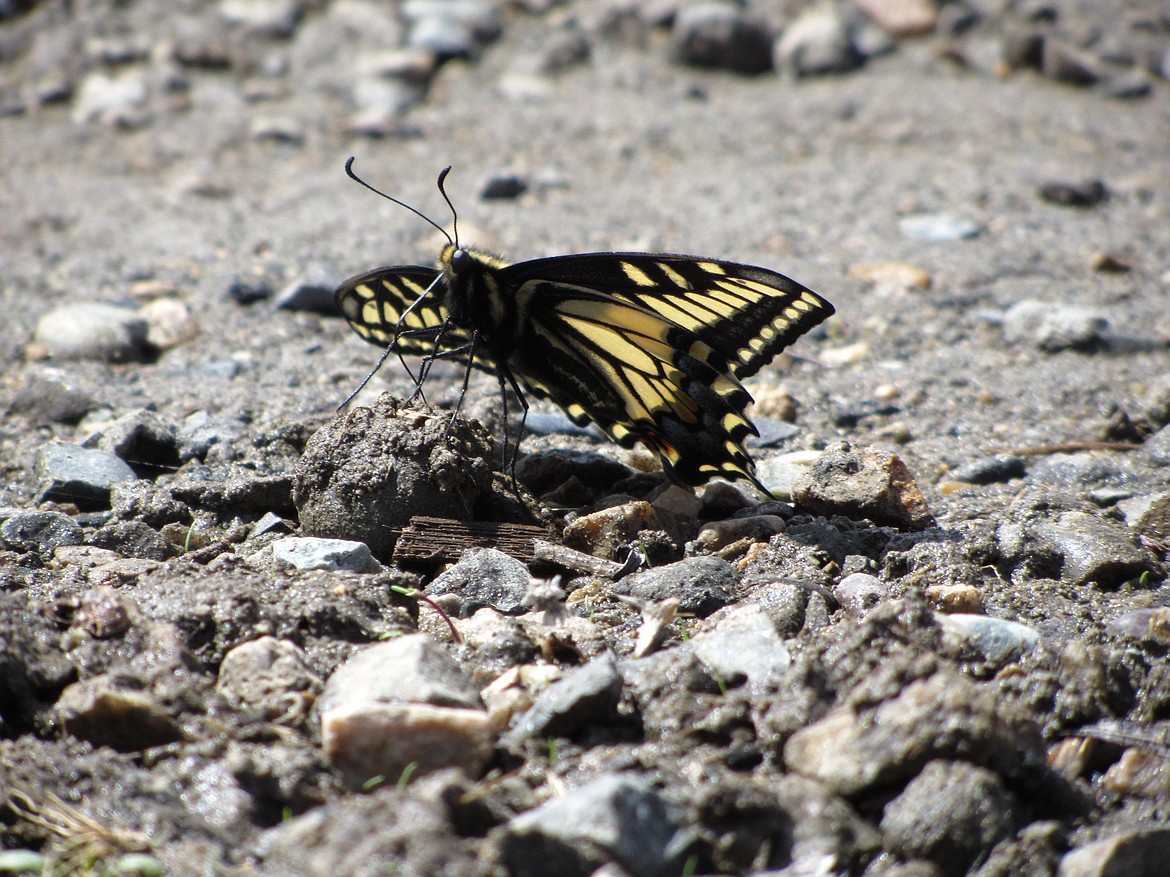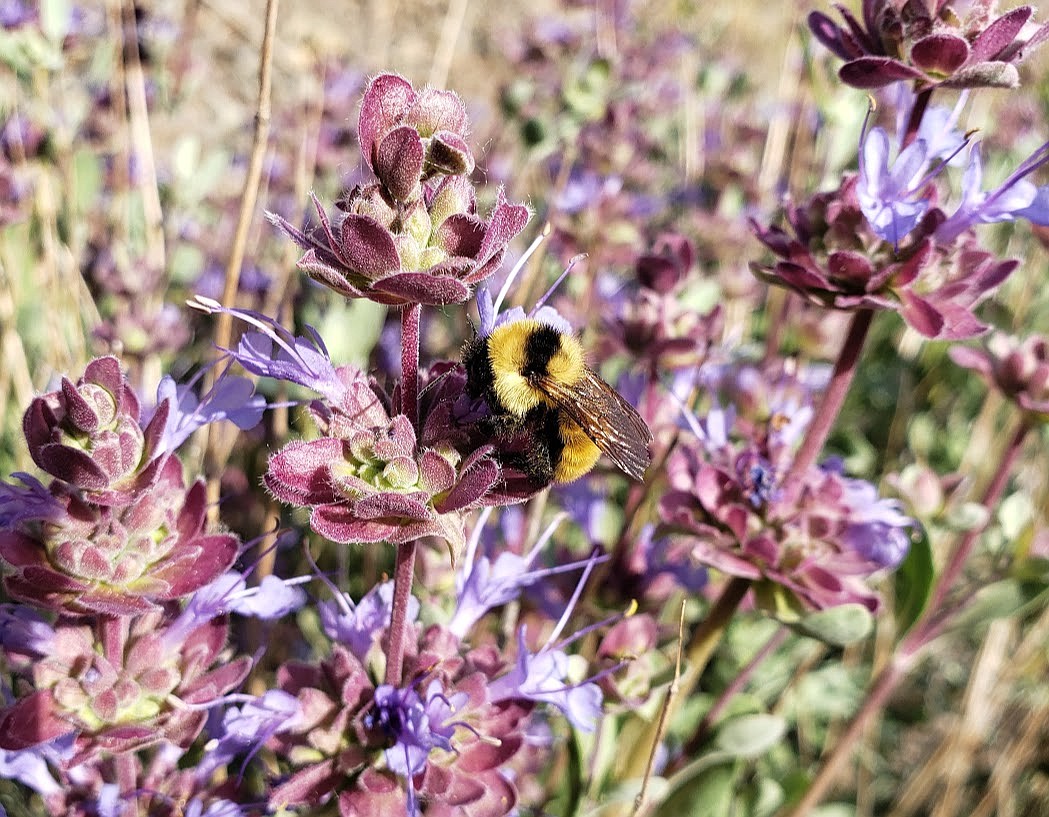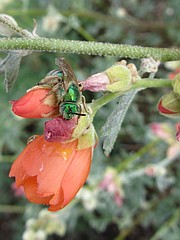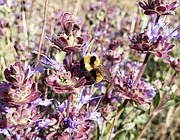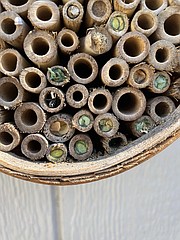A problem of pollen: Essential critters facing uphill battle in Washington
OLYMPIA — There’s something most people can do quite easily and quickly to help out the state’s bees, butterflies and other pollinators.
“Plant more flowers,” said Katie Buckley, the pollinator health coordinator for the Washington State Department of Agriculture’s Pollinator Health Task Force.
Buckley said she would prefer native flowers, shrubs and trees, however.
“There are good non-native options, but native plants provide more habitat. Non-natives usually aren’t hosts for butterflies and moths,” she said.
“My dream would be in a perfect world to replace lawns with fields of wildflowers,” she said. “It can be done with how-to guides to make it look good, but it does take planning.”
By pollinators, Buckley doesn’t just mean honeybees. She means everything that helps plants get pollen from one part to another — honeybees, bumblebees, wild bees of all kinds of shapes and sizes, wasps, hornets, beetles, flies, butterflies, moths, hummingbirds, even bats, if Washington had any species of pollinating bats.
“There are no pollinating bats. I checked,” she said. “But there’s a pretty good diversity of pollinators out there.”
Because while honeybees, which have been plagued with varroa mites and colony collapse disorder, have been the focus of much of the concern about pollinators, Buckley — who is scheduled to present on pollinators at this year’s Pacific Northwest Vegetable Association annual conference and trade show in Kennewick in mid-November — said all kinds of pollinator species are facing difficulties.
So they need as much help as they can get.
“Monarch butterflies have been having a severe problem, and they are a really cool migratory species,” Buckley said. “The west coast population of them last winter fell below what scientists thought was the extinction threshold.”
She also noted the western bumblebee, which is native to Washington and is facing competition from non-native bumblebees, is expected to be listed as an endangered species soon.
Rather than talk about wild and domesticated pollinators, Buckley referred to managed pollinators like honeybees and alfalfa leaf cutter bees and wild ones like bumblebees, butterflies and hummingbirds. And they are all at risk from the loss of habitat, pesticides and drought and heat waves caused by climate change.
“Pests and diseases are a big problem, too, particularly for bumblebees and honeybees, though they aren’t the same pests,” she said.
For example, Buckley described a “klepto parasite” that steals food from the nests of solitary mason bees, something that was discovered at about the same time Asian giant hornets were first sighted in the Pacific Northwest.
“They won’t kill them directly, just starve them to death. It’s still pretty bad,” Buckley said of the parasite.
According to author and pollinator specialist Heather Holm, there are about 20,000 species of bees worldwide. About 2,000 of those live in the United States, and of that, roughly 500 are native to Washington.
“There is an amazing bee diversity in Washington,” Holm said during an online webinar in early November sponsored by Heritage Gardens of the Columbia Basin, which promotes the cultivating of native plants in gardens, lawns and yards in Benton, Franklin, Kittitas and Yakima counties.
Holm said about 90% of the state’s bee species are solitary and do not make honey, and roughly a third specialize in pollinating native plant species. It’s important to focus not just on flowers and shrubs, but on soil types and availability of water when considering what to plant for bees and other pollinators, Holm explained.
“Bees have their own ecosystem, even soil type, and they like to nest near the flowering plants they specialize in,” she said.
But first, it’s important to know everything we can know about pollinators. And that’s why the state legislature created the Pollinator Task Force in 2018, to get a better sense of the problems of pollinators across the state and to propose potential solutions, Buckley said.
“We’ve been fully funded, and that’s pretty significant,” she said. “We’re working on an implementation plan, and some of the programs and recommendations have already been started. Some are longer term.”
One of the projects Buckley said hasn’t been funded yet is a detailed map, similar to the Oregon Bee Atlas, of all the bee species in Washington state. A Pacific Northwest Bumblebee Atlas has already been created by scientists and amateur collectors (Buckley refers to them as “citizen scientists”) to note just how many different kinds of species of bumblebees live and where in Washington, Oregon and Idaho.
Because, as Buckley noted, there are a number of species of bees in Washington that are not well known or simply aren’t known at all.
“Anybody can participate. They’re tracking what bumblebee species are where,” she said. “It also helps with tracking the spread of invasive bumblebees, like the common eastern bumblebee, but also the rare species like the western bumblebee.”
But, as Buckley noted earlier, the most important thing anyone can probably do in the very short term is to plant more flowers. It’s something that’s now required as part of all public works contracts and wildlife habitat restoration, she said.
“One of the really cool things the legislature passed is they required all public works projects in the state with landscaping to have 25% pollinator habitat,” she said. “That’s pretty significant.”
Buckley said an increasing number of farmers, especially those whose crops require insect pollination like tree fruit growers, are taking to planting flowers alongside their orchards.
“They will get better pollination if they have both wild and managed pollinators,” she said. “And it will help with insects on their property. It’s pretty cool.”
Lisa Hill, a Richland-based specialist in hummingbird habitat, said a number of plants that can thrive in little or no water can provide excellent nectar and pollen sources for both bees and hummingbirds.
“If a hummingbird likes to go to a plant for nectar, then other pollinators will, too,” Hill said.
Heather Wendt, assistant manager of the Benton and Franklin Conservation District, said her organization also works with homeowners and developers to look at sites, evaluate soil, create custom lists of native plants that will work best in a particular place, and even help with planting plans.
“Not only are we saving water, we’re creating habitat for our native pollinators,” Wendt said. “We really need to start including native plants into our landscaping if we want to continue to have native pollinators.”



